Practical experience with methods of job evaluation
Short version of the presentation by Dr. Rudolf Haller
Based on some recently conducted trainings and evaluations of workplaces with several popular methods it is discussed, which aspects of an evaluation are easily understood and used by “Non-experts”. In addition some hints are given how especially time/frequency analysis but also posture evaluation may be improved.
It is explained that some evaluation methods mix stress and strain factors. Especially the posture evaluation is a mix of stress and individual habits. Therefore it is necessary to consider also situation/posture awareness as an important way to improve a working situation.
Work
How is work humanitarian?
-
Feasibility of the work:
Is man ever be able to perform the required work?
-
Work satisfaction:
Do working conditions consider (individual) human needs?
-
Reasonableness of the work:
Is work complied with social minimum requirements or legislature statutes?
-
Tolerability of work:
Is the work regularly and a lifetime long performable without risk of health
impairment?
Objectives of job evaluation
- Wages, work organization
- Occupational safety, accident risks
- Ergonomics, human-centered design of work situation
- Health maintenance, strain, exposure
- Can human models represent the wide range of possible attitudes in a workplace?
Work and evaluation

Figure 1: Feasible, but not tolerable
(Click to enlarge)
Damage-free means that work doesn´t lead to immediate health hazard. (Injury,
accident at work)
Tolerability means that work in the long run doesn´t cause risk to health.
(work-related disease, occupational disease)
How disorders develop?
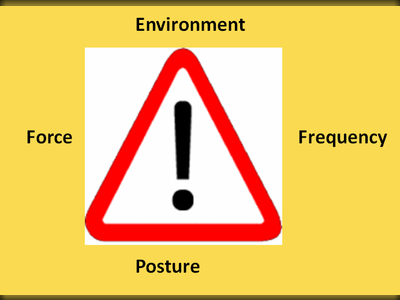
Figure 2: Development of disorders
(Click to enlarge)
Evaluators and evaluation methods
Reviewing by
- Analysis of jobs by ergonomics experts
- Ergonomics crash course and methods-training to non-experts
- Establishment of a process for ergonomics evaluation
- Verification or clarification of known issues (external consulting)
Existing knowledge in companies
- Occupational health and safety professionals
- Load handling at fixed workstations
- Lighting and air
- Ergonomic standards
Deficits
- Static and dynamic posture evaluation
- Individual requirements and adjustments
Principle decision on valuation methods
Simplicity or accuracy
Example NIOSH lifting equation: Who is NIOSH?
- NIOSH is in the U.S. Department of Health and Human Services
-
Works to prevent work-related illness, injury, disability, and death by:
- gathering information
- conducting scientific research
- translating the knowledge gained into products and services
- Commissioned to create a tool to determine “safe” limits for manual lifting in industry
NIOSH Lifting Equation?
The NIOSH Lifting Equation is used to assess two-handed symmetrical/asymmetrical lifts/lowers. The revised NIOSH lifting formula uses a constant weight LC (23.2 kg) and 6 multipliers to determine a threshold for lifting (RWL).
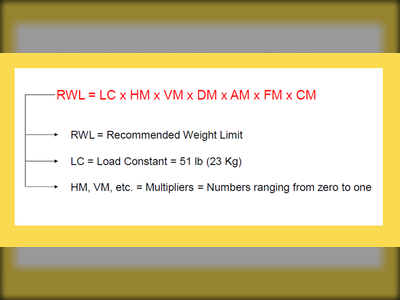
Figure 3: Determining the threshold for lifting
(Click to enlarge)
The 6 multipliers
- Horizontal Location (HM)
- VerticalLocation (VM)
- Travel Distance (DM)
- Angle of Asymmetry (AM)
- Frequency and Duration (FM2, FM1)
- Coupling (CM)
Example task variable horizontal position (HM)
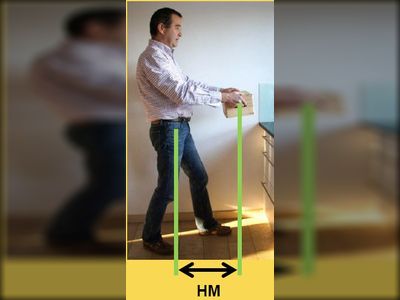
Figure 4: Example of HM
(Click to enlarge)
RWL = LC x HM x VM x DM x AM x FM x CM
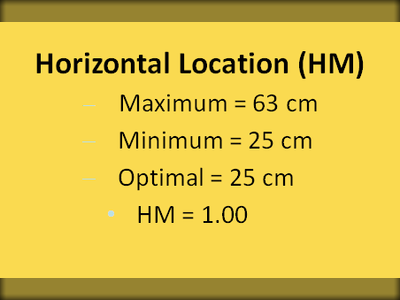
Figure 5: Horizontal Position (HM)
(Click to enlarge)
Example: Filling a punching machine

Figure 6: Filling a punching machine
(Click to enlarge)
Exemplary calculation for the RWL calculation:
RWLA= 20 x 0,44 x 0,94 x 0,86 x 1 x 1 x 0,95 = 6,75 kg
Sample method: Ergonomic Risk Assessment (ERA)
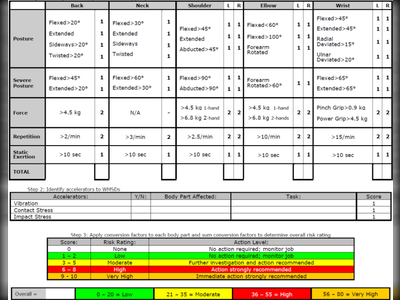
Figure 8: Ergonomic Risk Assessment (ERA):
Analysis of the strain of individual body parts
(Click to enlarge)
A review of the risk or likelihood of overuse in a specific body part by awarding points
Classification of postures

Figure 9: This posture review is easily understood and applied.
(Click to enlarge)
How strong the body is strained?
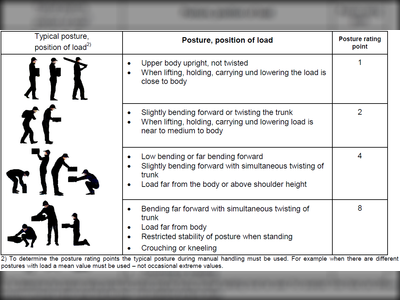
Figure 10: Here is
Posture rating = strain measurement!
(Click to enlarge)
An example from practice
Video + photo sequences are essential for the detection of stress factors
Time / quantity structure is locally poorly detectable, since the work process
(start / end) and individual variations "disturb"
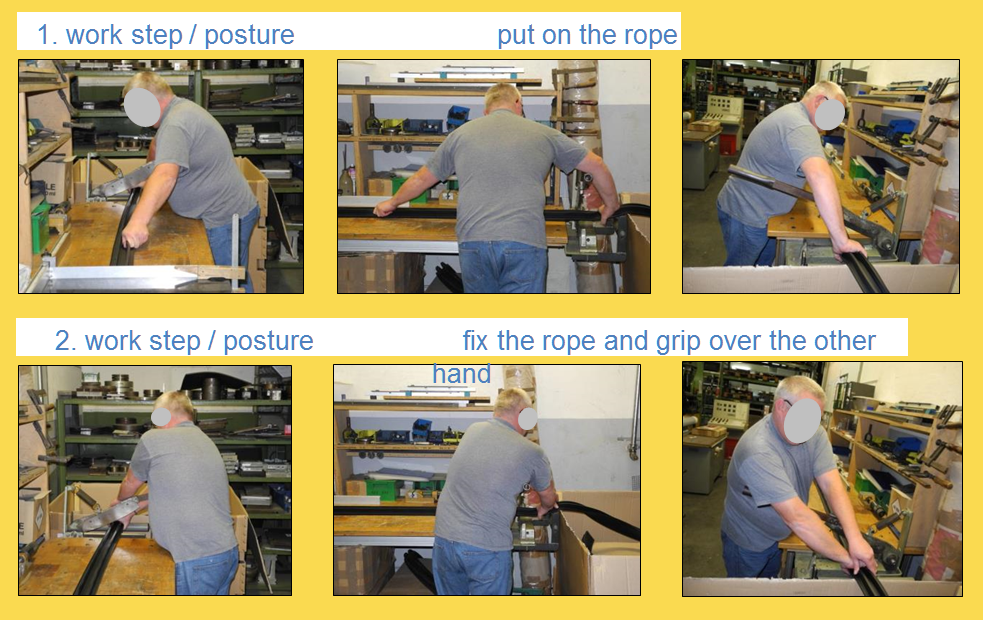
Figure 11: Practical example
(Click to enlarge)
What to do with reviews?
- Rate load profiles
- identify bottlenecks
- Design solutions derived:
- ergonomic design
- Organizational Optimization
- job rotation
- work technique training
- Business management consideration of solutions/costs
Stress or strain measurement
- What cover the different methods?
- How useful/consuming are the categories to be evaluated ?
- What is the practical significance of the partial results?
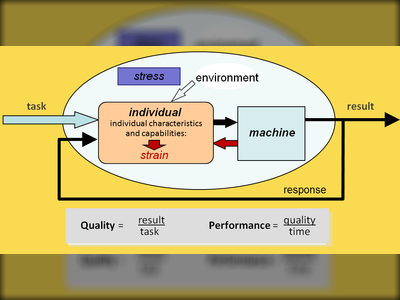
Figure 12: Stress
(Click to enlarge)
practical significance of the partial results
- suggestions for improvement
- for relative evaluation
- as a basis for discussion among internal processes
Stress and strain
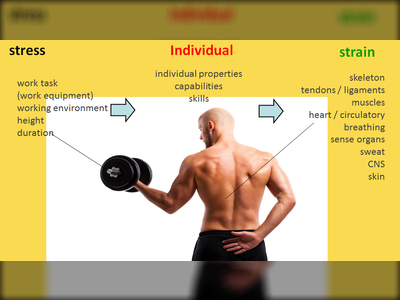
Figure 13: Stress and strain
(Click to enlarge)
Conclusion
- We need prevention concerning the performance ratio and individual behavior.
- For the latter, a time-lapse demonstration is necessary beyond pure posture rating. (Perceptibility of a harmful long-term effect)
- An appropriate summation method of load profiles for mixed workplaces is missing.
- There are still quite simple questions left. What is better: to stand or sit?
- Can human models represent the range of possible attitudes in a workplace?
Problems in applying the methods
- Practical lifting operations are usually much trickier than to capture by using simple methods.
- For "semi-skilled ergonomists" the limits of a method are difficult to grasp.
-
- Ergonomie-Kompetenz-Netzwerk e.V. (ECN)
- Verwaltung: Wolfgang G. Schneider
-
- Otto-Lilienthal-Straße 2
- 88046 Friedrichshafen
- Impressum
-
- Telefon: +(49) 7541-3003 446 | Fax: +(49) 7541-3003 448
- E-Mail: info@e-c-n.de | Internet: www.e-c-n.de
- Privacy Statement
